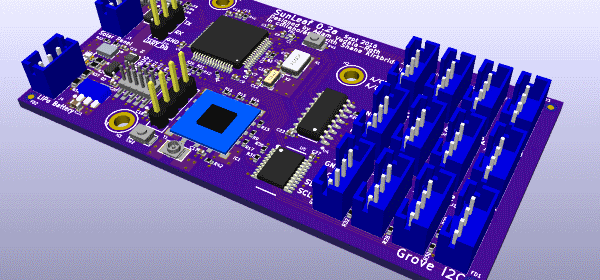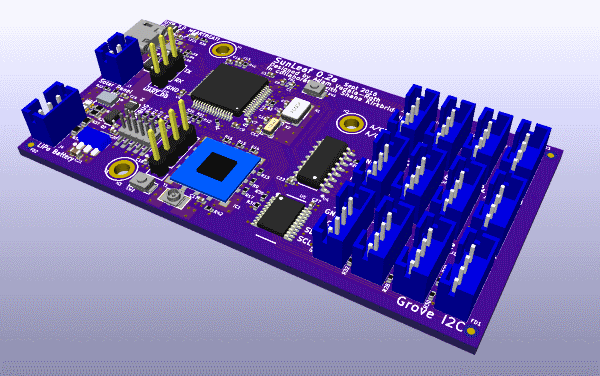SunLeaf: Solar-powered wireless sensor module

|
|
SunLeaf is a wireless sensor module designed by Adam Vadala-Roth for remote sensing applications. The module is solar/battery powered, low power, connected via WiFi, low cost, and highly scalable. SunLeaf interfaces with several variety sensors, samples, and transmits the data to the cloud. Data is viewed through a web interface. The SunLeaf module intends to be a solution for many remote wireless sensing applications, such as plant health, agriculture, monitoring pollution, and monitoring climate.
Module Hardware Specs
– ST Microelectronics STM32F446RET6 ARM Cortex M4F 168MHZ MCU
– ESP-02 ESP8266 WiFi Module
– 4x Seeedstudio UART/USART Grove Sensor Connectors
– 4x Seeedstudio I2C Grove Sensor Connectors
– 4x Analog Sensor Inputs (3 Pin Grove)
– USB 2.0 Connectivity for Development and Battery Charging
– Solar
SunLeaf is a wireless sensor module for remote sensing applications. The module is a simple low power device that interfaces with sensors and transmits that data to the cloud. The SunLeaf hardware makes up a rather complex printed circuit board. The brains of the device are an ARM Cortex M4 microcontroller and an ESP8266 module. The ARM interfaces with the sensors, and is the general brains of the device, the ESP8266 acts as a dedicated WiFi modem and interface to the web. SunLeaf will be able to perform firmware updates over the air. Sensors connect to the module via SeeedStudio Grove sensor connectors, SunLeaf accepts up to four UART, I2C, and analog/GPIO variety sensors. Module power is supplied by an onboard lithium ion battery, of which is charged by an onboard charge controller via solar panel or USB. Configuring the module for a given sensing application is performed by connecting with a PC either over USB or WiFi. The data logged from the sensors attached to a SunLeaf module is logged into https://thingspeak.com/channel.
|
|
